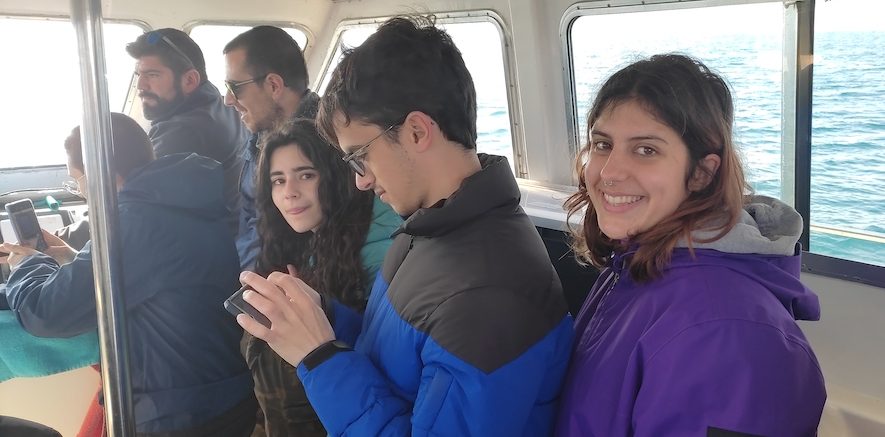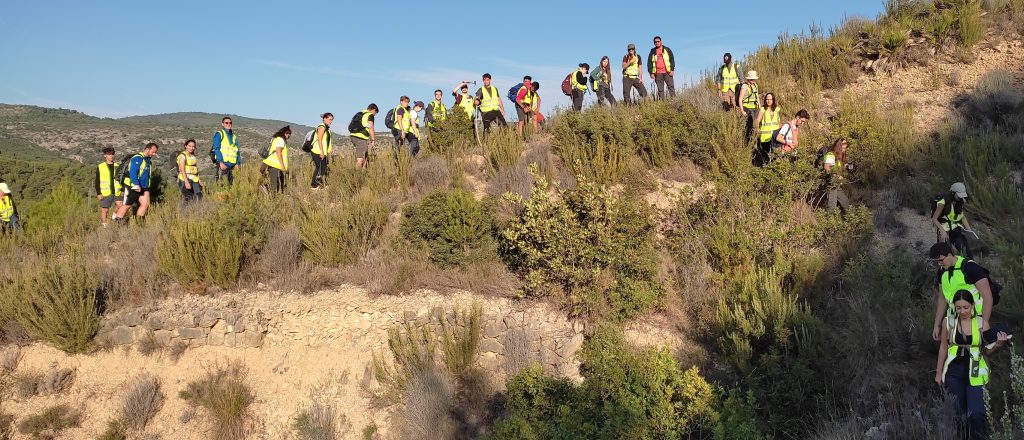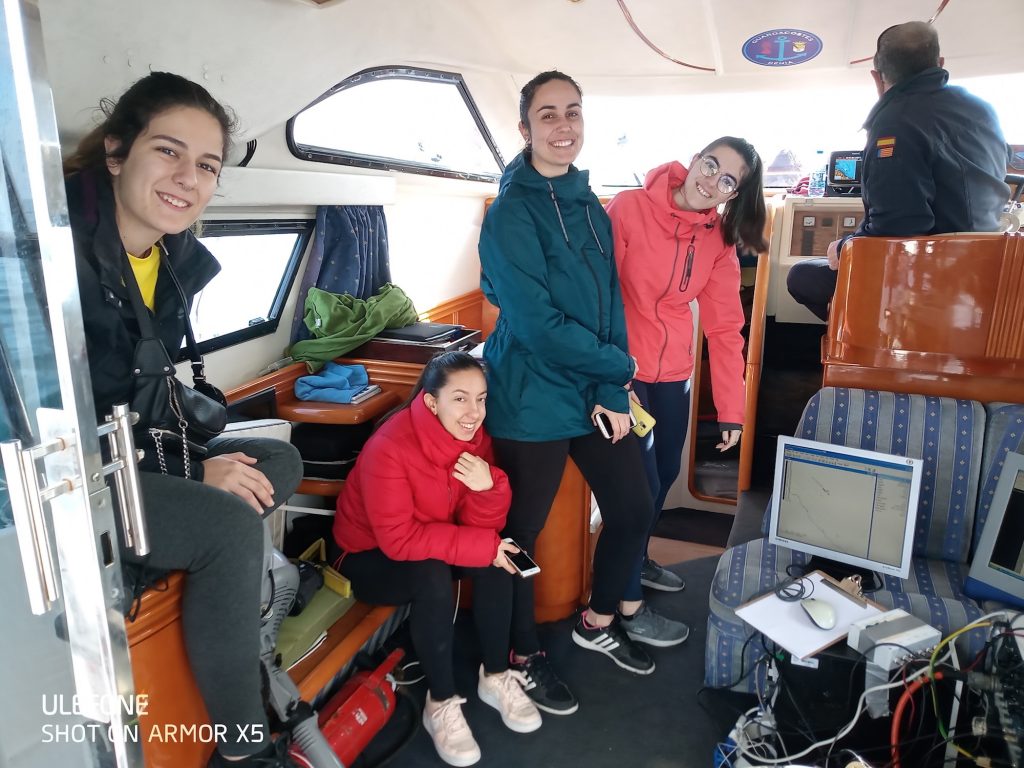Home » Posts tagged 'University Alicante'
Tag Archives: University Alicante
Students of Alicante University do marine geology practice in Torrevieja
Last March 4th, 2023, students in the third year of the Geology Degree carried out practices aboard the “Rosa de Abril” boat from the Torrevieja harbor . The practice was focused on different aspects of “Geophysics and geophysical prospecting”, under the supervision of Professor José Enrique Tent Manclús. This academic we have returned to sail as before the pandemic.

Sot de Chera field trip
Students of the third course of Geology of the Alicante University within the subject of Regional Geology: visit Jarafuel triassic section, Montealegre del Castillo triassic section, Sot de Chera Jurassic section and Monduver geologic dome.
The picture shows the in the Chulilla health resort section near by Sot de Chera (Valencia province)

Students of Alicante University do marine geology practices in Denia
Last February 6, 2020, students in the third year of the Marine Geology Degree carried out practices aboard the “Guadalupe” boat. This 12m-length boat assigned to the City of Dénia by the Court of Instruction number 3 of Dénia by the Judge Javier Reyes, is dedicated not only to surveillance tasks of the Marine Reserve of the Cape of San Antonio, but also to operations of pollution control and scientific monitoring of the protected area.
The practice was focused on different aspects of “Geophysics and geophysical prospecting”, under the supervision of Professor José Enrique Tent Manclús. Within a research program of the Multidisciplinary Institute for the Study of the Environment “Ramón Margalef” (IMEM) of the University of Alicante that together with the City Council of Dénia and the National Parks Autonomous Organization operate the Montgó-Dénia Scientific Station (ESCIMO-Dénia).
Taking advantage the good conditions at sea, marine geophysics equipment was tested, specifically a high-resolution marine boomer equipment linked to a differential GPS. The practice was to leave the port, perform the boot sequence and navigate acquiring data. Through sound waves, this equipment allows interpreting the geometry of the layers below the seabed using the same principle as the medical ultrasound, which was precisely developed from this marine technology. Like 2d ultrasound, experience and practice are required for interpretation.
In this first marine campaign, it has been tested the equipment adjustment settings to obtain a better results. The students have been able to see in situ how the equipment studied in the classroom works and, above all, have a first contact with work in the marine environment, much more hostile than the terrestrial to carry out any study.

The marine area of the San Antonio Cape is the extension of the rocky massif of Montgó. The equipment is intended to see the thicknesses of the sandbars and / or sediments trapped by the Posidonia oceanica, above the rocky bottoms. In a future campaign will be locate and delimit the bodies of sand and how they change to areas without sand. In the deepest parts it is expected to be able to locate some level of marine terrace formed when the sea level was lower as a result of the last glaciation. At the last glacial maximum, 18,000 years ago, the sea level was 120 m below the current level. A warming began that caused a rise of 1 to 2 cm a year, but about 14,000 and 11,700 years ago the global climate cooled, which stopped the ascent. This generated rocky coasts that are currently marine terraces between 70 and 60 m deep. After this cold interval known as the “Younger Dryas”, the level rose to reach its current position about 6000 years ago. Younger Dryas terraces have already been located in the coastal area Tabarca Island (South coast Alicante) and in the near future it is intended to study these terraces in the area of San Antonio Cabe.
This study of marine geology together with others of a biological and physical-chemical nature, promoted by the Montgó Scientific Station (ESCIMO-Dénia), not only seeks to improve the knowledge of a very interesting area at the geological level but also to lay the foundations for a proposal to expand and improve the fishing resources for the artisanal fleet around the Marine Reserve as well as the promotion of sustainable activities such as diving.

Recent Comments